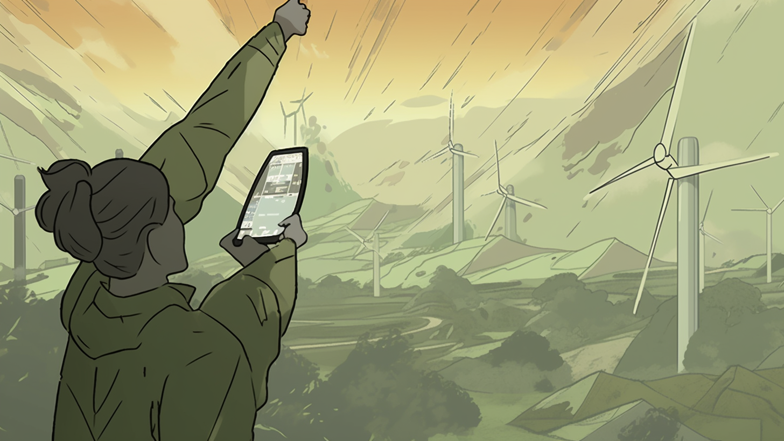
AI has the potential to revolutionize the renewable energy industry by optimizing energy production and storage, reducing costs, and improving sustainability. In this article, we will explore some of the ways in which AI is being used to improve renewable energy sources and the impact it could have on the future of sustainable energy.
Optimizing energy production
One of the primary applications of AI in renewable energy is to optimize energy production from solar and wind power. AI algorithms can analyze various factors such as weather patterns, historical data, feed-in rates, and other variables to determine the optimal times for energy production. By collecting data from sensors and weather forecasts, AI can drive the automation of renewable energy systems and optimize the energy output.
For instance, through the use of AI, solar farms could know when to deploy maintenance teams, soiling those panels most affected by dust and debris. AI can also improve solar panel efficiency by optimizing the angle and direction at which they are placed to capture the most sunlight. By analyzing and calculating weather conditions and changes in ambient light, AI can shift solar panels throughout the day and in different seasons to improve energy output.
Similarly, wind turbines could be controlled through AI to optimize the angle of the blades based on wind speed and direction. This could help reduce the cost of wind energy as turbines would be able to generate more power with fewer rotations. Predictive maintenance can be another application of AI for wind turbines, where routine maintenance scheduling will be based on actual data, which in turn will reduce the maintenance costs and improve availability.
Reducing costs
Another major benefit of incorporating AI into renewable energy systems is that it can help reduce costs. For example, smart grid technology can detect energy storage capacity of EV (Electric Vehicles) batteries and determine if they can be utilized as a power source during high-demand periods. This will not only support the grid but enable EV owners to sell energy back to those who need it.
AI can also help in the design of more efficient solar panels and wind turbines by analyzing data from various sources like materials science and meteorology. AI algorithms can predict potential points of failure in the design and recommend changes to make these systems more resilient and efficient.
Improving sustainability
Incorporating AI into renewable energy sources can improve their sustainability by making them more efficient and reducing their carbon footprint. AI can be used to identify renewable energy projects that have the least impact on the environment and recommend the most suitable locations for renewable energy sources like solar and wind power.
Real-time data monitoring using AI can help to mitigate negative environmental impacts like land-use changes and changes in habitat range and species vulnerability. AI can also be used to detect and respond to emerging threats to renewable energy infrastructure, like natural disasters and cyberattacks, that can reduce both the production and storage of renewable energy on a long-term basis.
AI-based sustainability assessments can analyze the direct and indirect environmental impacts of renewable energy systems and how they compare with conventional energy systems. This technology could also help to assess the environmental impact of renewable energy projects at a micro-spatial level, which will have positive outcomes for the coexistence of renewable energy projects with sensitive ecosystems.
Conclusion
The intersection of renewable energy and AI has enormous potential for improving renewable energy sources like solar and wind power, enabling them to reach their full potential as sustainable energy sources. AI can optimize energy production and storage, reduce costs, and improve sustainability, making renewable energy sources more reliable and more accessible to a much broader population.
Moving forward, it is clear that incorporating AI into renewable energy systems will be a crucial factor in shaping our energy landscape and the future of sustainable energy. Both industries have experienced rapid growth in recent years, and the combination of AI and renewable energy is expected to offer even greater benefits to the world in meeting its energy needs while reducing its carbon footprint.
Comments
Post a Comment